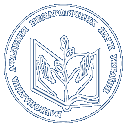- Guraliuk, Andrii (orcid.org/0000-0002-7497-5746), Rostoka, Marina Lvovna (orcid.org/0000-0002-1891-5482), Cherevychnyi, Gennadii Semenovich, Zakatnov, Dmytro (orcid.org/0000-0002-4130-089X) and Pavlysh, T.H. (2021) Dual-Component Ontograph Visualization IOP Conference Series: Materials Science and Engineering. International Conference on Technics, Technologies and Education 2020 (ICTTE 2020) 4th-6th November 2020, Yambol, Bulgaria (1031).
|
Text
Dual-Component Ontograph Visualization.pdf Download (921kB) |
Abstract
Today there are several generally accepted methods of storing data in an information network. One of the most modern is the presentation of data in the form of a semi-structured (with the possibility of fuzzy formalization) set – a knowledge base. Compared to databases, this view has several advantages: the ability to store complex heterogeneous information; the ability to expand and supplement the description of the subject area without reprogramming; visibility and accessibility of knowledge presentation to the user. But this advantage of them turns into a problem, which currently has been only partially solved. The data in the knowledge base can be in such a form that their presentation according to formalized rules and algorithms is impossible or ineffective. Currently, the most promising in terms of representing data structures is considered to be an ontological representation that copes well with displaying an arbitrary structure. Most of the visual representations of ontologies (Protégé in integration with OWLViz, OntoGraf, 3D Hyperbolyc, Tree, etc.) are images of nodes as a set of conditional points (small geometric shapes) connected by lines –ontographs. This approach to visualization is less informative and inconvenient to apply to the educational process. The need to create new approaches to the presentation of information, implement its accessibility and efficiency of usage is becoming increasingly important. Along with traditional information support in the form of databases, knowledge bases have begun to develop at a tremendous pace, which, when used effectively, provide significant competitive advantages. An important feature of knowledge bases is the ability to work with approximate sets. The authors developed ontograph visualization technology, partially implemented on the Ontos.xyz web resource. This resource allows you to visualize the vertices of the ontograph, the connections between them and assign each set of contexts that are related to it. Each of the nodes of the ontograph contains a specific descriptive context. The main feature of the Ontos editor is the ability to assign each node a context of all types supported by the browser. Including html pages, web 2.0 resources, etc. Also, the proposed system implements the visualization of knowledge bases, consisting of two components: a navigator that determines the path to some node of the ontograph that has children and a visualization slider for this node that displays these elements. The knowledge base viewer is a slider that resembles a photo gallery slider with advanced navigation. The ontological approach to servicing knowledge bases can be not only a means of organizing knowledge. The knowledge bases developed on the basis of the ontological approach make it possible to work actively with knowledge, to solve problems associated with education, the development of artificial intelligence, decision-making systems, and many other areas where approximate sets can be used.
Downloads
Downloads per month over past year
Actions (login required)
 |
View Item |




